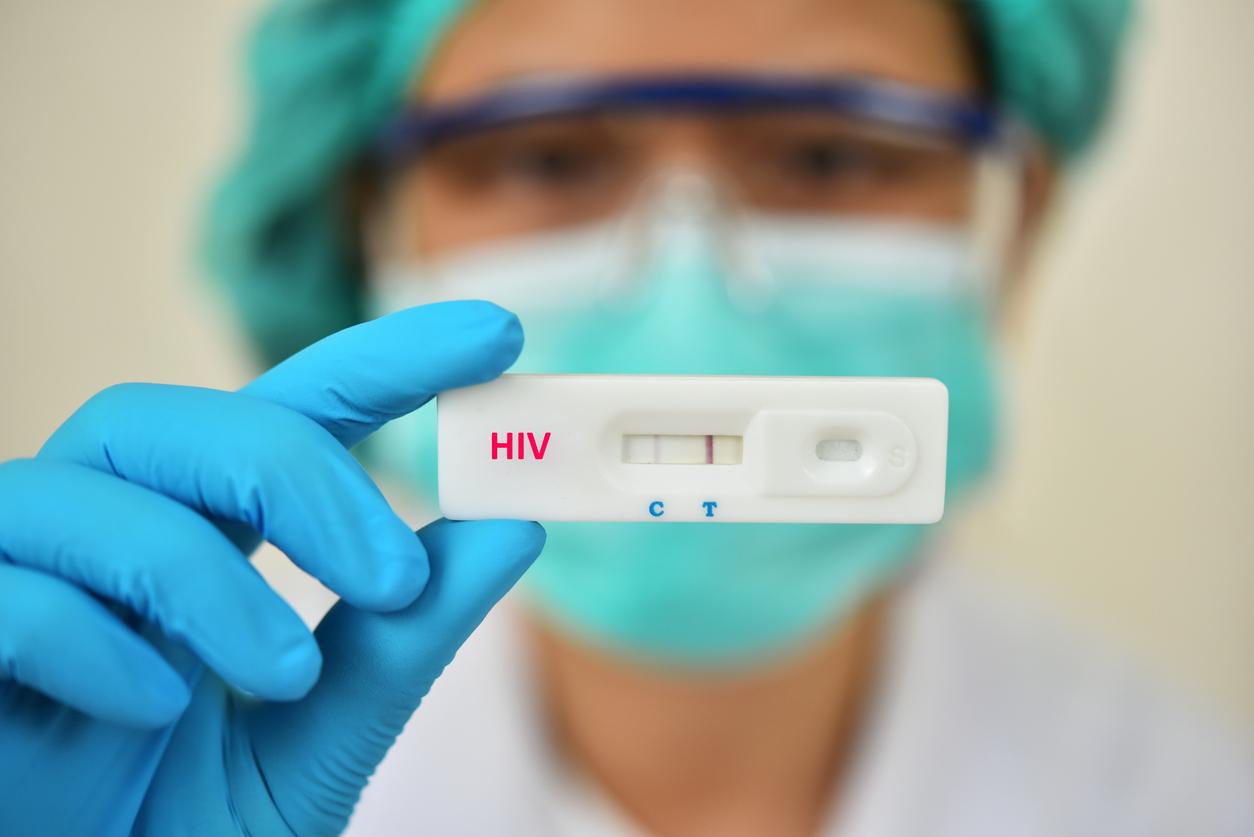In Germany, a 63-year-old man died in hospital after being licked by his dog. He had been infected with the pathogenic bacterium Capnocytophaga canimorsus, present in the animal’s saliva.

Here is a sad news item that should chill dog lovers. A 63-year-old German man died after being licked by his pet, doctors at the hospital in Bremen (Germany) report in the journal European Journal of Case Reports in Internal Medicine. He was infected with the pathogenic bacteria Capnocytophaga canimorsus, present in the saliva of his dog. This kind of case is extremely rare.
According to the doctor’s account, the 60-year-old first presented to the hospital in Bremen with fever and difficulty breathing. If he has been feeling sick for three days, the symptoms worsened the day before he went to the emergency room, he explains. Red spots have appeared on his face, his right leg hurts and he now suffers from muscle pain in the extremities of his limbs. The specialists also observe a dysfunction of his kidneys and his liver.
He was then transferred to the intensive care unit. Diagnosis: the man suffers from purpura fulminans, a severe form of sepsis. The bacteria responsible for this widespread infection is called Capnocytophaga canimorsus and comes from his dog’s saliva. Unfortunately, despite antibiotics, the patient’s condition did not improve and he died in hospital after 16 days of intensive treatment.
For pet owners, caution is in order
Although the risk of developing such an infection after cuddling your dog is very low (one in a million cases), caution is advised. “Owners of pets with flu-like symptoms should seek urgent medical attention when their symptoms go beyond those of a simple viral infection, in this case severe dyspnea and petechiae,” warn experts..
“Physicians faced with such patients should ask about contact with dogs and cats. They should also consider C. canimorsus infections in the presence of purpura fulminans and the absence of animal bites or scratches, and any immunodeficiency. In such cases, the clinician should immediately begin empirical treatment with penicillin in combination with a beta-lactam inhibitor until a definitive diagnosis is established.”
In detail, only three strains of the bacterium Capnocytophaga canimorsus are dangerous for humans and they represent only 7.6% of the nine strains. C. canimorsus is a bacillus that grows mainly in the absence of oxygen. It is found in particular in the saliva of dogs and cats which, even if they do not develop any disease, can transmit it to humans by licking a wound or a bite.
The deceased patient was in good health
The infection can lead to blood clotting disorders that lead to hemorrhaging and generalized sepsis. Cellular necrosis and acute renal failure can then occur. It is then sometimes necessary to practice an amputation of the limbs in the hope of limiting the spread of the infection to the vital organs. Unfortunately, it sometimes happens that this is not enough and that the patients die. In 99% of the time, people affected are immunocompromised.
“Among the predisposing factors (to infection, editor’s note), we first find people with a failing immune system, due to a disease, treatment or removal of the spleen, as well as diabetics. and alcoholics (…) But we now know that immunocompetent patients can also be contaminated, even if it is rarer”, explains Anne Gougeon, professor of microbiology at the University of Rennes-1 and hospital practitioner at the Rennes University Hospital. , to Point.
The deceased German is therefore an unfortunate exception since he was in perfect health. “The patient’s history and clinical and laboratory examinations revealed no immunodeficiency, asplenia or alcohol abuse,” note the doctors who treated him.
Last August, a 52-year-old American woman contracted blood poisoning from her dog’s saliva. If she hadn’t died, the infection had still caused her to lose all four of her limbs. Like the 63-year-old German man who died, this woman presented to the emergency room with flu-like symptoms and severe pain in her limbs.
.
















